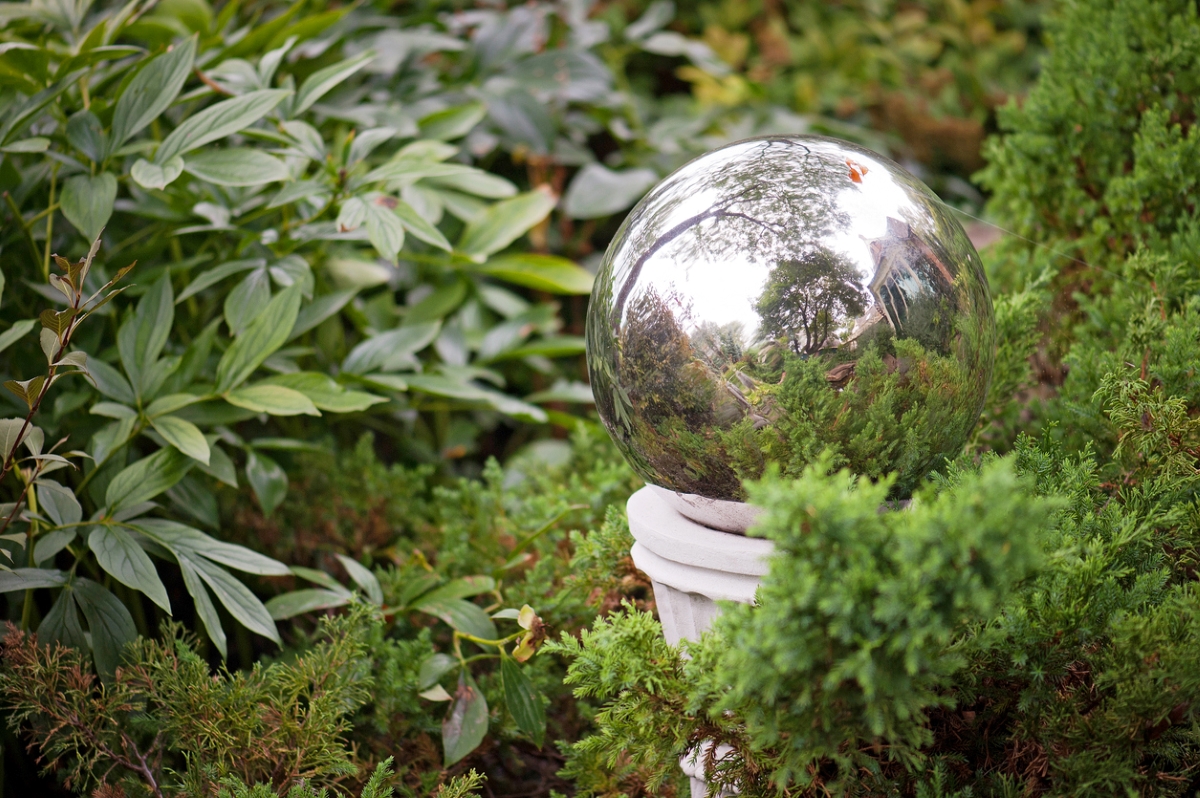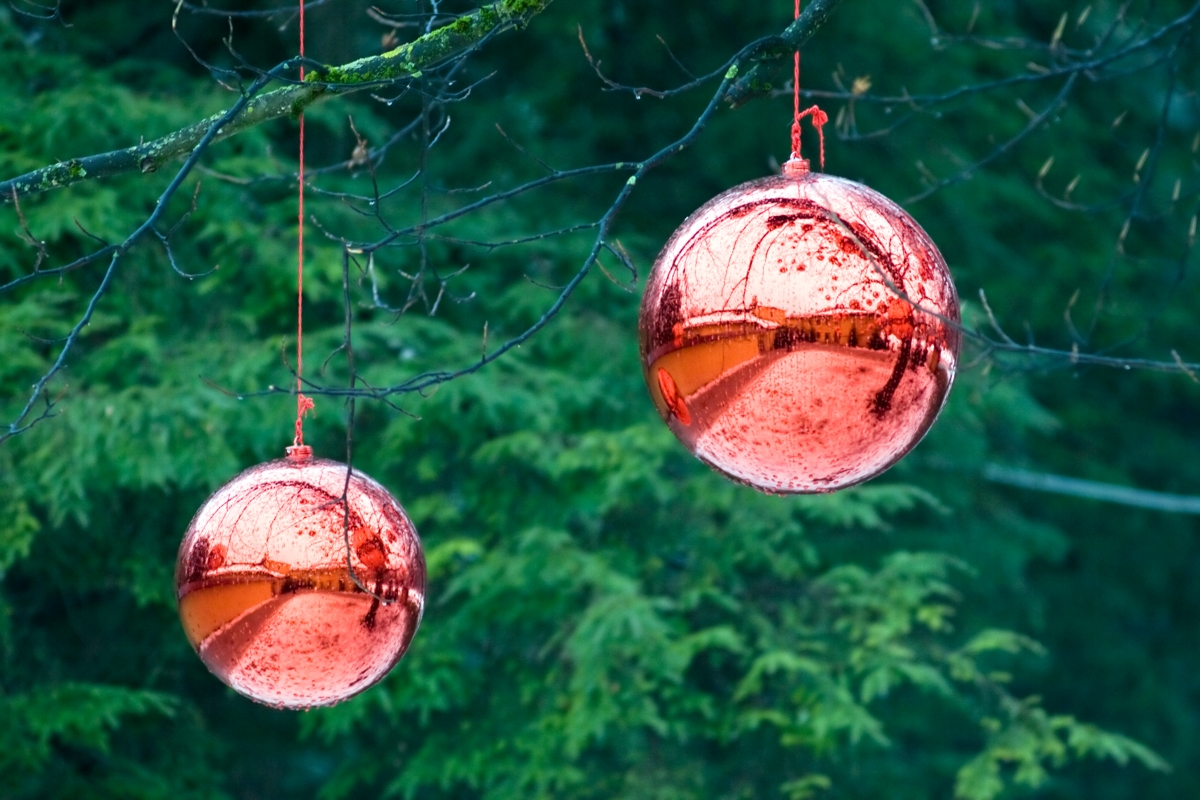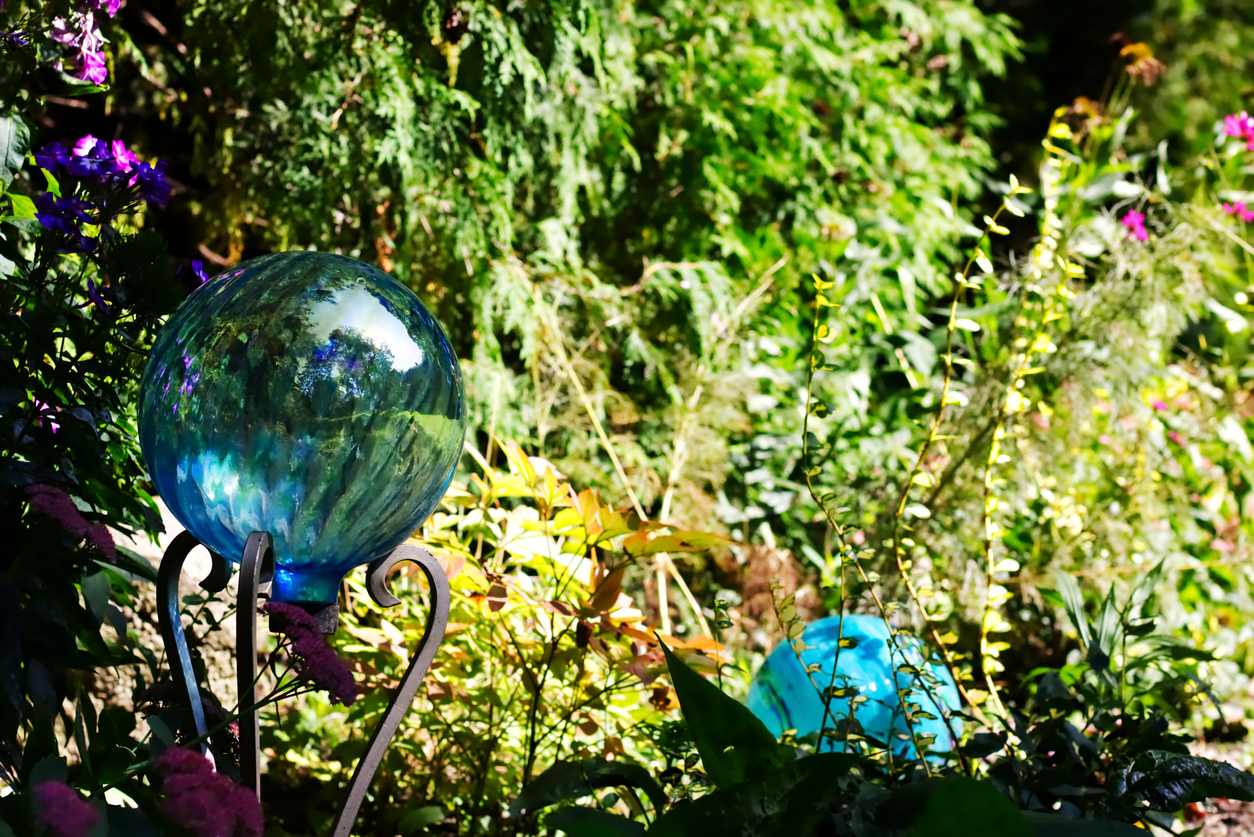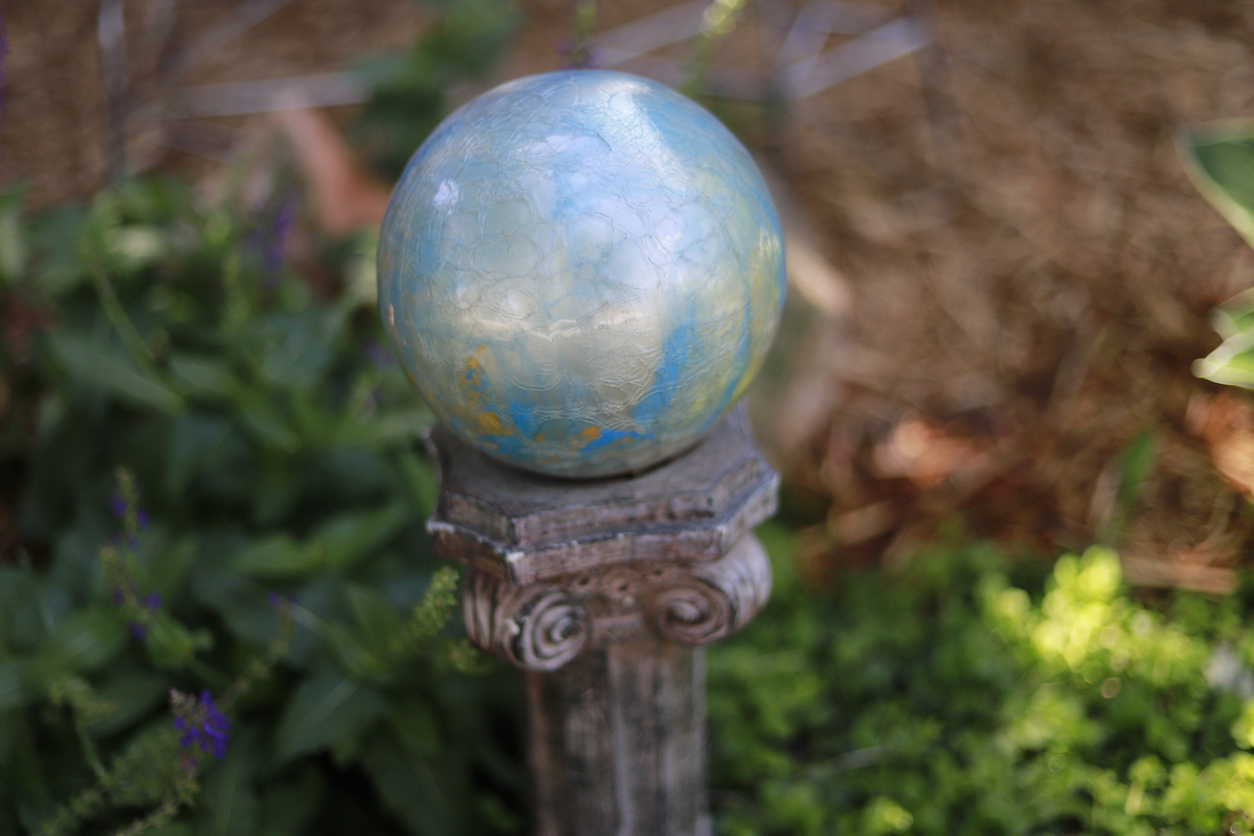

We may earn revenue from the products available on this page and participate in affiliate programs. Learn More ›
These reflective spheres we use as lawn ornaments are known by many other monikers, including mirror balls, yard globes, garden globes, chrome balls, mirror balls, witch balls, wish balls, wishing spheres, fairy balls, and butler balls. These names offer insight into the orbs’ varied purposes throughout history, plus some fascinating folklore about them.
The Stuff of Spheres
First made by Venetian artisans in the 13th century, the original gazing globes were glass. Blown-glass, crackle glass, speckle glass, and mosaic glass versions still are popular, but as modern outdoor decorations, they’re just as likely to be stainless steel, ceramic, or acrylic. Today’s orbs are also available with solar-powered LED lights, to illuminate the yards and gardens of folks who like a little extra shine.
Garden globes can be nestled into a flower bed or amidst a ground cover, but they’re more often perched atop pedestals or stands traditionally made of wrought iron, ceramic, travertine, or cast cement. Nowadays, modern materials like polyresin are commonly used as lightweight, easy-care substitutes in a vast array of styles—including Roman-style pillars or minimalist metal structures.
RELATED: 11 Curb Appeal Trends
The Playthings of a Mad King

After their Venetian origin, the fascinating history of these hollow baubles picks up with Bavaria’s Ludwig II, aka “Mad King Ludwig.” Rather than exhibiting military or political prowess, the debilitatingly shy and introverted Ludwig concerned himself with art, architecture, and culture—his patronage is said to have saved the career of Richard Wagner. He also built several castles near Munich where he could stage operas and retreat into a fantastical fairytale world of his own imagination.
The eccentric monarch, who ruled Bavaria from 1864 to 1886, also exhibited an affinity for blown glass globes, displaying them atop pedestals on his elaborately landscaped grounds and floating them on ponds. Because he also suspended the balls from trees, some accounts give the “Mad King” credit for “inventing” Christmas ornaments. (While his reign was contemporaneous with that of England’s Prince Albert—aka Mr. Queen Victoria—who’s attributed with bringing the Tannenbaum indoors, the tradition of trimming yuletide trees with glass ornaments predates both.)
RELATED: Sci-Fi in the Garden: How to Transform Your Garden to Reflect the “Hortifuturism” Trend
Butler Balls
Meanwhile, over in England, the Victorians took an immediate shine to the spheres, installing them as decor in their prized gardens. But, being Victorians, it wasn’t long before they took a second look and wanted to make them more opulent. Some glass blowers added mercury to the gazing globes to increase their reflective powers, rendering the balls harmful to humans.
From this aesthetic addition was born the globes’ use as “butler balls,” on sideboards and buffets in the homes of wealthy families. During meals, the butler ball’s reflective surface showed servants, positioned on standby just outside the dining room, when their affluent employers had finished the fish course or required refills of claret—allowing discreet and seamless attention to these matters.
Stories abound of mirror balls serving a similar purpose in other eras and areas, from hospitable Southern hostesses keeping a keen eye on guests’ iced-tea glasses to eagle-eyed chaperones who used the reflective globes to make certain that courting couples kept their affections above-board.
RELATED: 45 Backyard Landscaping Ideas for Creating the Ultimate Outdoor Living Space
Fairies, Witches, and Wishes

Several other sobriquets point to the use of reflective glass spheres as totems endowed with the power to attract or repel various figures. As “fairy balls,” they were hung outside homes to entice friendly spirits and good fortune. “Witch balls,” conversely, would protect a household from evil, either by scaring off their namesake hag or trapping the witchy troublemaker inside the bubble. (Like so many aspects of sorcery, it’s unclear exactly how that trap was meant to work, let alone what evicting the witch from one’s ball might entail.)
More modern uses of glass globes include giving them to avid gardeners or new homeowners to add color to the landscape or as symbols of fertile soil, bountiful gardens, a happy marriage, or simply good luck—hence their nickname of “wish [or wishing] balls.”
RELATED: How to Grow a Moon Garden at Home
How to Make Your Own Gazing Globe

Wary of placing a delicate blown-glass ornament in your yard? Can’t find a gazing globe that really speaks to you or fits in with your garden’s aesthetic? Have an old bowling ball, fish bowl, or lamp globe lying around that you want to upcycle? Maybe you need a customized ball to deter a specific witch? Making your own garden sphere lawn ornament is a fun and fairly easy weekend project.
Depending on the material you are repurposing, you might need to sand down or rough up your “base” ball. Then cover it with anything shiny or reflective with a flat (-ish) surface that can be adhered to a sphere—glass gems, old costume jewelry, bits of beach glass, or pennies. For an even quicker DIY, simply press metallic spray paint into service.
